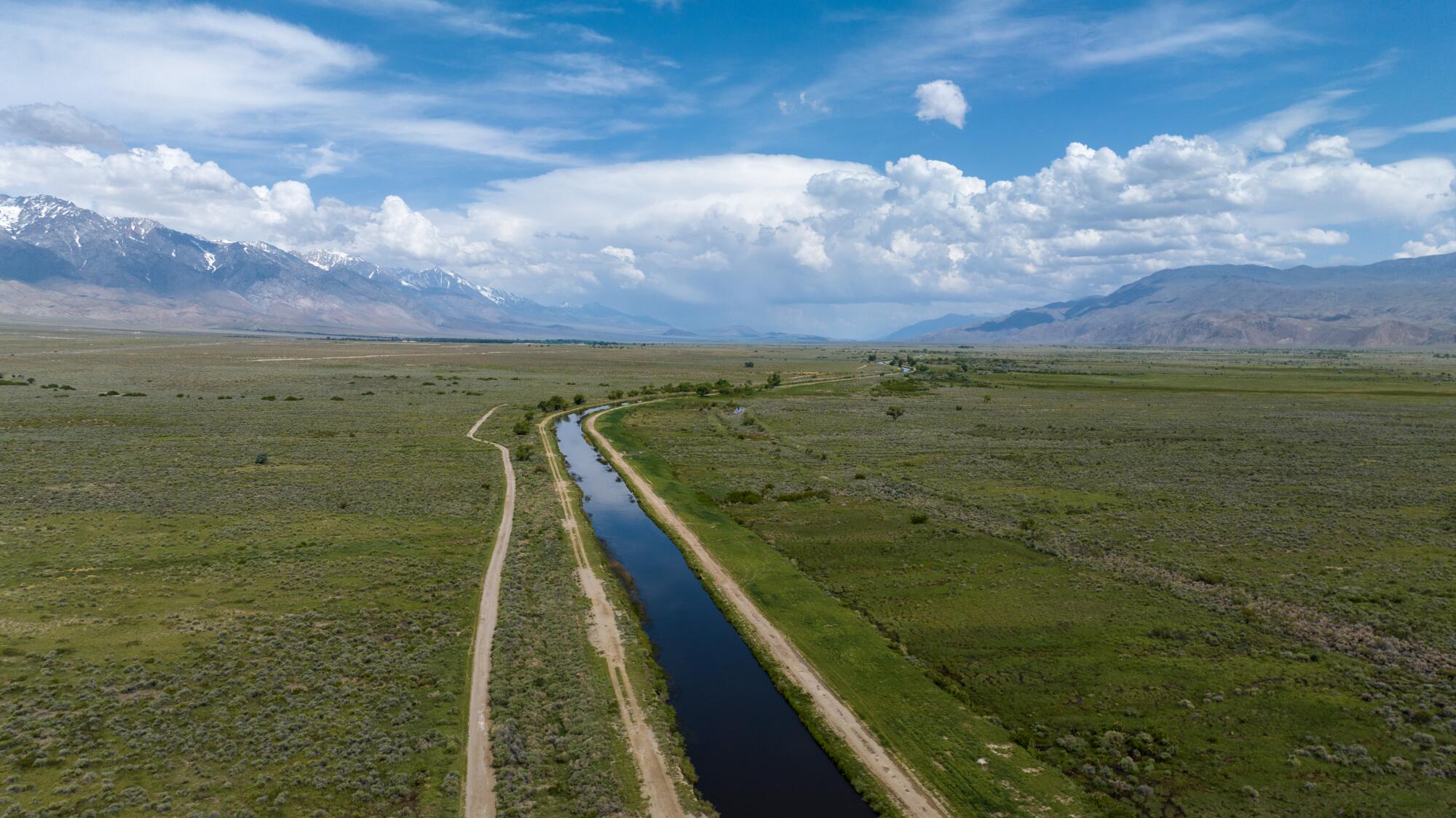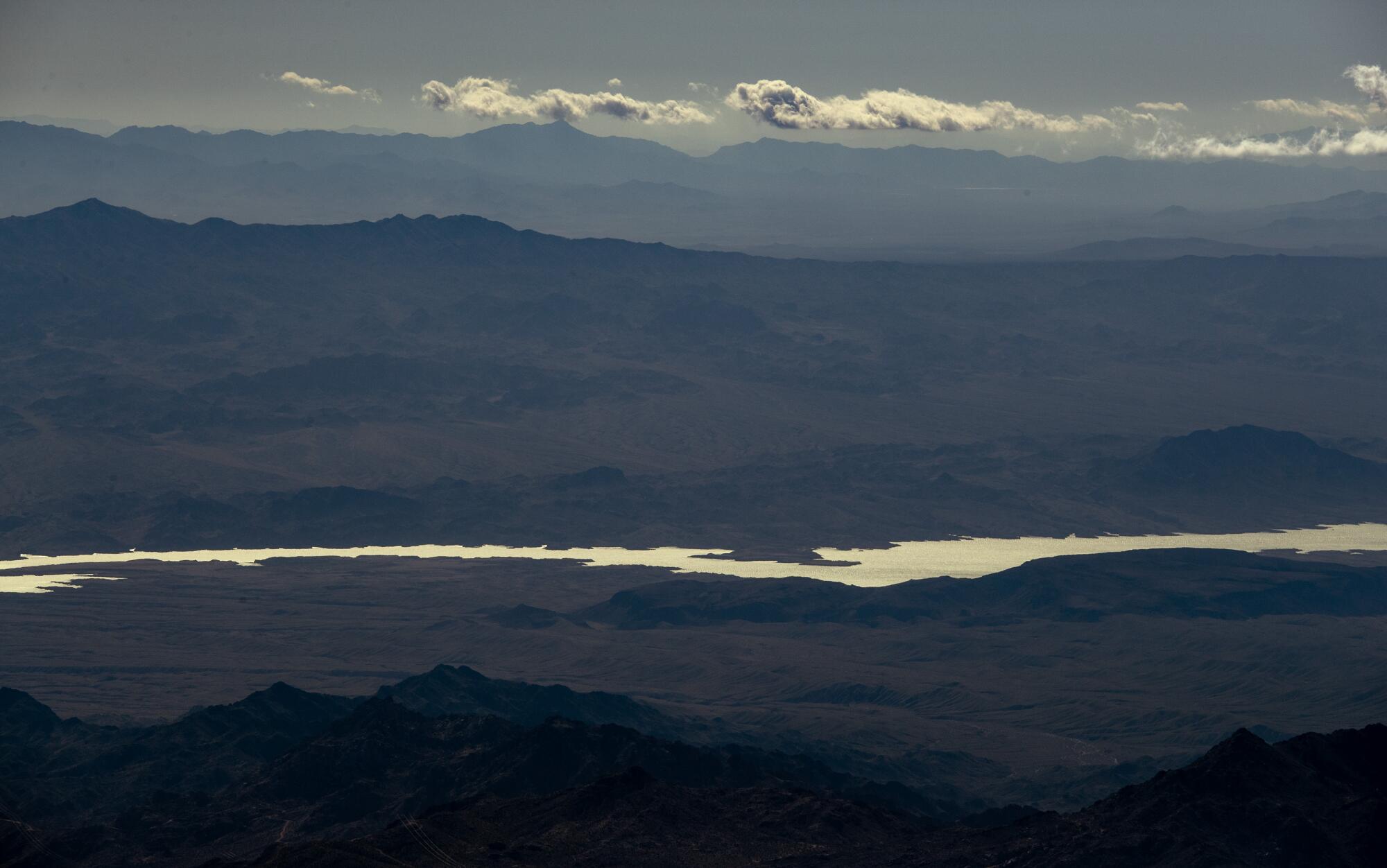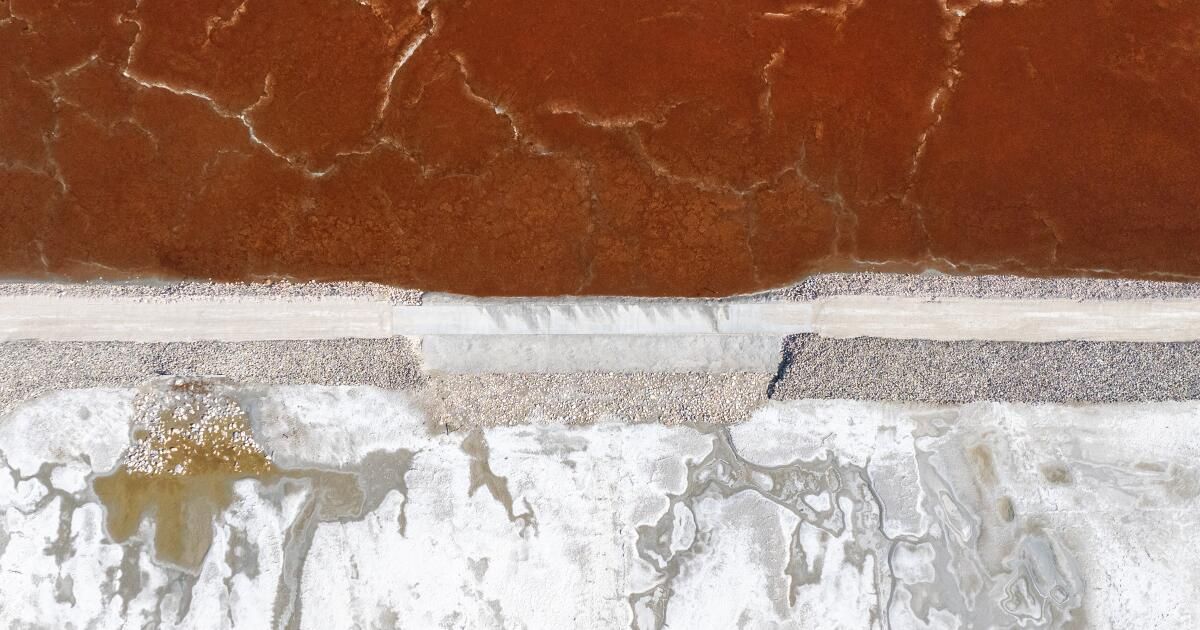Known for its bright bands of yellow, orange and red, the U.S. Drought Monitor has warned farmers, residents and officials across the country of impending water shortages every week since 1999.
Backed by data on soil moisture, temperature, snow cover, meltwater runoff, reservoir levels and more, the map has become an essential instrument for determining the outlook for water supplies. , declaring drought emergencies and deciding where and when government aid should be distributed, among others. other things.
But this critical diagnostic tool is also struggling to keep pace with climate change as longer, more persistent periods of drought hit the American West and take an increasing toll on groundwater reserves and the Colorado River, according to a recent study published in the journal AGU Advances.
One problem, researchers say, is that the monitor was launched just as one of the driest periods in the history of the Southwest began, and it has never adjusted to the region's increasing aridity.
Aggressive and impactful reporting on climate change, the environment, health and science.
“The product is essential, but in my opinion it is certainly also influenced by climate change,” said Justin Mankin, one of the study's authors and an associate professor of geography at Dartmouth. “And we in the drought community need to have a conversation about how drought monitoring should be thought about in the context of an arid climate.”
The monitor provides an accurate and reliable snapshot of what is happening in the climate system at any given time, including a combination of global warming and La Niña conditions that are contributing to drought conditions in the southwestern United States, according to the study. .
But its introduction coincided with the start of a multi-decade period of drought in the West, including the region's 22 driest years in at least the last 1,200 years, sometimes called a megadrought.
During that period, some parts of California experienced exceptional droughts (the worst of five possible categories) nine times more often than they should, based on drought monitor probability. The areas were in that category 18% of the time, or over a period of nearly four years, compared with the normal benchmark of 2%, the study found.
The findings raise questions about how family screening can better address long-term trends and whether a product designed for periodic anomalies can accurately capture a much larger, slower-moving crisis.
“Those trends … emphasize the theoretical guidelines of the product itself, and I would say undermine its usefulness as a decision maker,” said Mankin, who also served as co-chair of the National Oceanic and Atmospheric Administration's Drought Working Group. .
In fact, the monitor is more than just a measure of dryness. It is used to inform social and economic policies, including decisions regarding state and local drought emergency declarations, federal funding for farmers and agribusinesses, and other disaster-related aid.
The Farm Service Agency, for example, uses weekly Drought Monitor updates to distribute certain assistance programs, such as emergency hay collection and the Livestock Forage Disaster Program. The Internal Revenue Service uses it for some livestock-related tax deferrals, while the U.S. Department of Agriculture uses it to determine eligibility for low-interest loans.
But resources unleashed by exceptional conditions can be depleted quickly if those conditions last for months or even years, said Jason Smerdon, another of the study's authors and a climate scientist at the Columbia Climate School.
“It's an emergency, but a different kind of emergency,” Smerdon said. “If it's going to be dark red all the time, then short-term relief aid to address the challenge is not really the way to think about it. “It is an emergency of a much more protracted and persistent nature that I think requires different planning and different relief.”
Experts working on Drought Monitor said they are open to feedback and also acknowledged that the tool has its limitations.
“The Drought Monitor was never intended to be an indicator of climate change, but rather a real-time assessment of drought conditions,” said Mark Svoboda, director of the National Drought Mitigation Center at the University of Nebraska-Lincoln, which produces the monitor in partnership with NOAA and USDA.
The monitor uses a “convergence of evidence” approach that pulls data from dozens of indicators each week, including measurements of precipitation, soil moisture, snow cover, snow water equivalents, streamflows, evapotranspiration, and groundwater and reservoir levels. , said. That means they are also beholden to the limitations of those tools.

The Los Angeles Aqueduct passes through the Owens Valley in June 2023, in Lone Pine, California.
(Brian van der Brug/Los Angeles Times)
Before its release each Thursday, more than 400 experts from across the country review a draft of the update and weigh in on their findings. It's rare for a product of this type to have so much input and also add a bit of art to the science, according to Svoboda, who co-founded Drought Monitor in 1999 and authored it for 17 years.
But the problem today is that it is not yet known whether the West's megadrought represents a permanent climate change that could justify a recalibration of tools, or whether there may still be wetter days ahead, he said. In already arid regions, who decides when small changes in humidity turn into a tipping point into a new era?
“We've seen these multi-decade droughts where then we've seen a return to a wetter regime,” Svoboda said. “So the real challenge right now, 20 years later, because of climate change, is: will we never see a retreat? So, do we classify and shift to a more arid climate in a given region? “That is the real hundred billion dollar question, and our indicators right now none of them are going to address that question, because we are not a prediction tool.”
The good news is that the monitor is generally adept at standardizing its ratings for regional variations, such as how an “exceptional” drought could have very different implications in California versus a place like Vermont, Smerdon said.
But the weekly outlook also isn't “enough to think about where we're going and what we're doing in light of the increasing water pressures we're going to experience in the West,” he said.
For example, the researchers found that Southern California was never classified as having exceptional drought during the 23-year period of the study, even though millions of people in and around Los Angeles had been placed under the strictest water restrictions. to date in the middle of the three driest areas of the state. years recorded.
What's more, the Drought Monitor currently shows that most of California and the Southwest are out of the worst stages of drought following two recent wet winters. But groundwater supplies are still depleted and the Colorado River has not fully recovered from more than two decades of drought, and Lake Mead still measures only about 35% full.

The Colorado River flows along the California-Arizona state line on April 3, 2023.
(Brian van der Brug/Los Angeles Times)
“Those are the central banks for the water economy in the West, but if you look at the map, that doesn't appear there in any substantial way,” Mankin said.
Svoboda said the current readings in the Colorado River region represent a “double-edged sword.” Lake Mead is unlikely to reach full capacity again, but continuing to reflect that on the Drought Monitor would leave the map there indefinitely in the red.
“The challenge is always that you don't want to cry wolf too soon, but you certainly don't want to wait until the wolf eats you,” he said of declaring a drought. “And when you're coming out of a drought, the same thing applies. “The impacts of drought may persist.”
Other tools, such as reservoir monitors from the U.S. Bureau of Reclamation and the California Department of Water Resources, are better equipped to measure water shortages and supply in the region than the Drought Monitor, he added.
But there are potential ways to help the tool evolve with climate change, including expanding its baseline to include wetter periods before the onset of the current megadrought, which would help flatten the bell curve and reduce the frequency. of the extremes, the researchers said.
Adding a new “super exceptional” category could also help with your calibration. It is a measure that has already been proposed for other worsening climate phenomena, such as a new “Category 6” for hurricanes.
However, that solution has limits when it comes to drought, which is limited by finite amounts of water, unlike hurricanes, which have no upper limit of strength, the researchers said.
Svoboda similarly said the Drought Monitor is limited by limited records on many of the products it depends on. What's more, adjusting “normal” would also mean that all surrounding policies (like Farm Service Agency relief) would also have to change.
These problems do not necessarily indicate failures in the monitor, but rather underscore the need for a variety of tools, he and the researchers said. The U.S. Drought Monitor should not be the be-all and end-all of decision-making, and should continue to be combined with reservoir observations, snow surveys, and other measurements to form a complete picture.
Mankin said he hopes the study can shed light on the need for long-term adaptation and the increased possibility that California and other states will experience droughts much more frequently than before.
However, he and Smerdon stressed that the study should not undermine the value of the Drought Monitor, nor the work of those who keep it updated week after week.
“Monitoring the drought and keeping a sense of how the hydroclimate fluctuates in the United States is really important, and it's really been a game-changer to have that as a resource and for planning,” Smerdon said. “I just think it has to evolve. “We have to think about what a tool like the Drought Monitor means in a changing climate.”
Newsletter
Towards a more sustainable California
Get Boiling Point, our newsletter exploring climate change, energy and the environment, and be part of the conversation and the solution.
You may occasionally receive promotional content from the Los Angeles Times.












